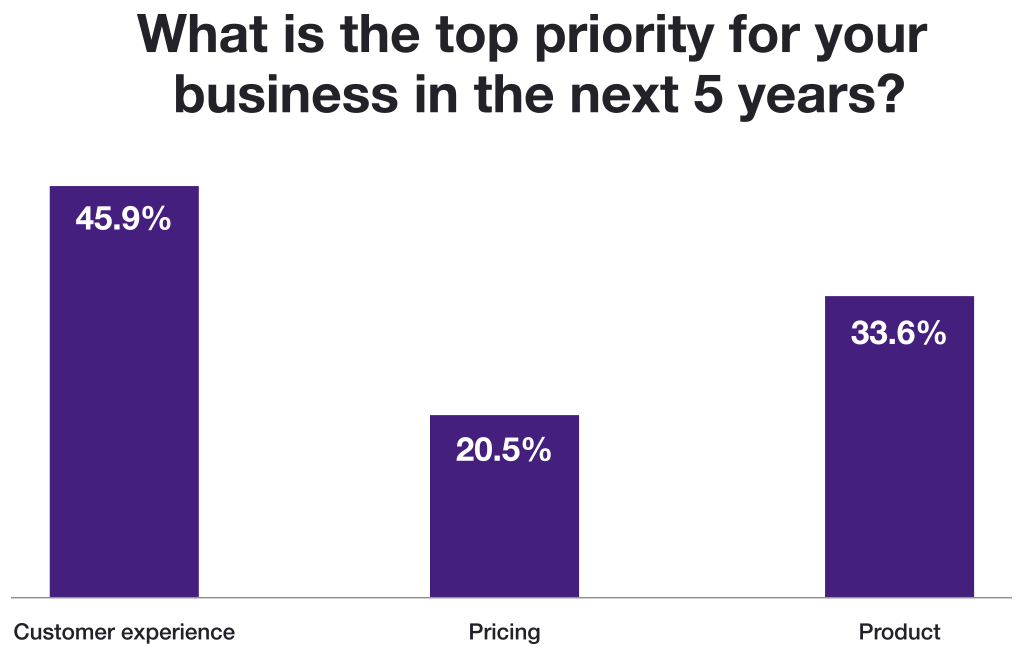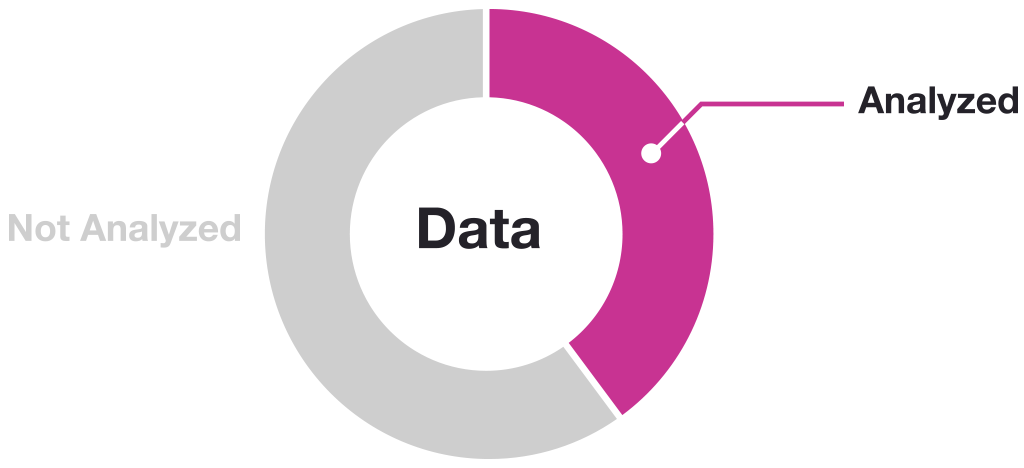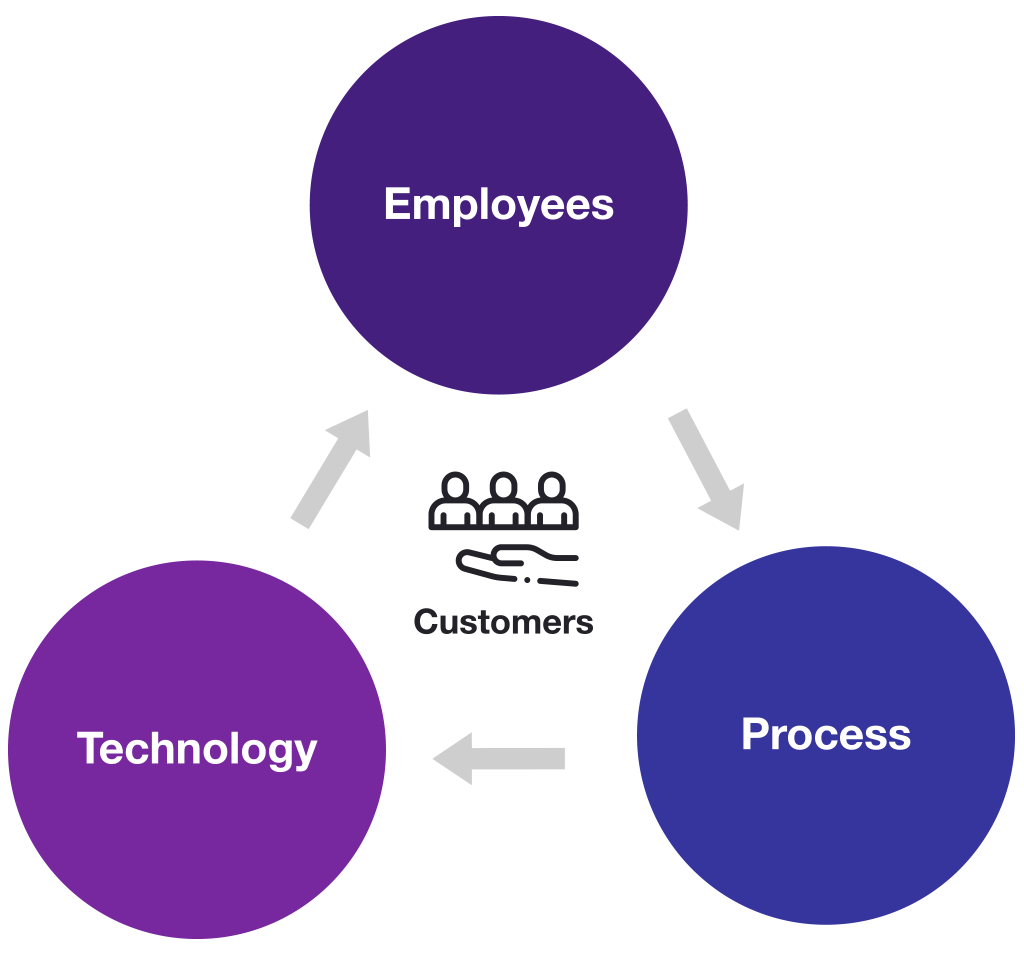Digital customer experience (CX) in 2024 is a top-of-mind priority for companies and marketing executives who want to build or maintain a competitive advantage. The landscape is changing – and while AI will remain the newest kid on the block for 2024, personalization is the best friend who’s still in the neighborhood and louder than ever. Digital experiences remain a staple part of the CX neighborhood vibe. Regardless of who’s considered part of the CX “in crowd,” research indicates that customer experience will remain a top priority for the foreseeable future.

Clearly, there’s still work to be done when it comes to CX. While many companies recognize it as a priority, many companies find themselves facing a CX dilemma—their perception of the customer experience they provide differs greatly from the perception their customers have. According to an IDC White Paper, over 80% of surveyed brands rated themselves highly (with a score of +7 out of 10) in terms of their omni-channel customer experience. However, only 40% of consumers rated their overall customer experience as 7 or higher. That’s a pretty wide chasm for companies to cross.
The trends in CX for 2024 are all focused on closing the gap between a company’s perception of its customer experience and the customer’s actual experience. Those who successfully achieve this will be rewarded with a loyal and profitable customer base.
Companies that fail to prioritize customer experience will suffer from underwhelming performance and an eroding customer base. BlastX Consulting has identified five crucial trends for CX in 2024 – core activities that will play a significant role in determining a company’s competitive position in the long run. The companies that dedicate resources to strategy, insights, enablement, and activation will emerge as winners in the race to capture the hearts and minds of customers.
1. Lean into customer journey analytics (CJA) for actionable insights
In the realm of digital customer experience (CX), there’s no universal solution. Each customer journey is unique, with customers spanning multiple channels as they engage with brands. To enhance CX, companies need to better understand and improve omni-channel experiences for their customers. The key to achieving this goal is to double down on your customer data. Most organizations possess a wealth of data, but BlastX Consulting has found that the real challenge for these companies lies in consistently analyzing and transforming this data into valuable insights throughout the customer journey.

Customer data siloes are a primary causal factor in CX issues. These siloes limit our understanding of the customer journey, providing only fragmented insights that can lead to:
- Strategies that optimize the customer experience in a disjointed manner
- Confusion and disagreement amongst teams regarding which is the “true” data source, particularly when multiple tools are involved in collecting data for a single, specific stage of the customer journey
- Cultivate an environment in which teams are less likely to make data-driven decisions
- Hamper prompt and precise enhancements to the digital customer experience
To effectively address this matter, it’s crucial to ensure that your customer journey analytics (CJA) framework is well-established. BlastX Consulting has been instrumental in helping many organizations evolve their analytics MarTech to provide better support for understanding the customer journey. Companies have witnessed significant performance improvements as a result of their CJA efforts. This impact has been seen across all industries, but the healthcare industry has experienced a sizable surge in the adoption of customer journey analytics.
CJA is the source of real-time insights that propel informed action and strategic decision-making. This is vital for brands who define customer experience (CX) as a priority.
It’s interesting that the pursuit of improved customer journey analytics originates from the healthcare sector, where individuals are referred to as patients (providers) and members (payers). Implementing CJA in the healthcare arena presents its own set of challenges. Not all technologies are suited to this industry. Factors such as data privacy, security, and compliance with HIPAA regulations must be carefully considered. However, certain analytics platforms like Adobe and Amplitude have specifically tailored their CJA solutions to meet the needs of the healthcare industry and are willing to sign Business Associates Agreements (BAAs) to bear that liability. On the other hand, analytics platforms like Google Analytics (including GA4) don’t claim HIPAA compliance and will not sign a BAA to safeguard the data.
Regardless of industry, every company stands to benefit from implementing an appropriate customer journey analytics strategy. It’s the only way to gain a holistic and comprehensive view into the customer journey.
Even more important, CJA is the source of real-time insights that propel informed action and strategic decision-making. This is vital for brands who define customer experience (CX) as a priority. It’s the only way to achieve hyper-personalization, reduce friction, and swiftly address problems – all of which are pivotal aspects of customer satisfaction.
2. Engage and interact with customers on their terms (AI and voice)
A. Artificial Intelligence (AI) is driving the conversation
It’s no surprise that Artificial Intelligence (AI) is a hot topic for 2024 trends in CX. AI is actually propelling the conversation to new levels. In 2023, companies heavily embraced AI in various areas like streamlining processes, generating content for on-site experiences (e.g., blog posts, images), and large-scale data consumption and analysis.
Now, in 2024, it’s time to prepare for AI’s impact on user engagement. An example of this is Google’s upcoming launch of the Search Generative Experience (SGE) expected in early 2024. Currently, SGE is in beta testing with users, including BlastX Consulting. With SGE, Google aims to directly engage with users through conversations on the search results page. The objective isn’t just to answer initial queries, but to foster a conversation with users by:
- providing natural language responses
- prompting follow-up questions, and
- retaining the context of the earlier interaction for a richer experience
One of the impacts we anticipate in this new “search” landscape is a rise in zero-click engagement. This will mean less traffic to your website because customers’ needs are addressed directly by Google SGE. This will fundamentally change the interaction dynamic. It’s imperative for your company to adapt and optimize for this new landscape. In 2024 your content must clearly speak to your customer’s needs, preferences, and questions. To thrive in this transformed world, your content must adopt a more conversational tone and structure.

Industry statistics reveal that the rise in popularity of voice search can be attributed, at least in part, to the belief held by consumers believing that voice search is easier, faster, and more convenient than traditional online searches.
Ease of use, speed, and convenience have long been understood as essential to providing a superior customer experience. Whether it’s through mobile devices or smart speakers, organizations must embrace and capitalize on the optimized experience that voice search offers if they want to gain a competitive edge. One effective strategy for optimizing the voice search experience is to ensure that content is crafted using conversational language. Again, this reinforces the need to engage with customers in a manner that’s natural, welcoming, and personal.
3. Demonstrate the value of CX through business impact
Gone are the days of assuming a direct correlation between customer experience (CX) initiatives and business outcomes. In a recent Forrester CX Cast episode titled “The State of CX Teams”, Principal Analyst Judy Weader shared key insights from their 2023 survey on customer experience. One noteworthy finding was a surprising year-over-year decline in executive support for CX initiatives. This decline can be attributed to various factors, including challenging economic conditions.
While many leaders recognize the importance of tracking customer loyalty (NPS) and customer satisfaction (CSAT), they also need to grasp how these metrics influence crucial business Key Performance Indicators (KPIs).
Given the current market landscape, executives face heightened pressure to realize the value of their investments. BlastX Consulting has observed this trend, as organizations strive to extract more value from their data and existing MarTech in 2024. The same holds true for CX investments. There’s a growing need for organizations to comprehend how CX programs, such as Voice of the Customer (VoC), contribute to business impact. While many leaders recognize the importance of tracking customer loyalty (NPS) and customer satisfaction (CSAT), they also need to grasp how these metrics influence crucial business Key Performance Indicators (KPIs), ranging from revenue to customer retention to customer lifetime value.
Making this connection isn’t easy and requires strategic, analytical, and storytelling expertise, which the Forrester survey highlights as a critical gap for many in-house CX resources. In 2024, it’s crucial for organizations to assess the strengths and weaknesses of their in-house CX resources. Those who can effectively connect their CX efforts to business outcomes will gain a competitive edge by understanding how to enhance the digital customer experience in ways that have both immediate and long-lasting impacts on their business.
4. Deliver excellent employee experiences to enable CX success
Companies want customers. Companies need customers. They know sustained positive customer experiences will help build a strong, loyal customer base. However, they often overlook the crucial role that employees play in this equation. Companies that build exceptional CX performance systems realize that the first, best step towards achieving this goal is a stellar employee experience. These companies possess a comprehensive understanding of the employee experience, taking into account the interplay between people, processes, and technology.

At BlastX Consulting, we’ve witnessed the challenges faced by teams responsible for enhancing the digital customer experience when they lack the necessary processes and technology to succeed. For instance, organizations may invest in state-of-the-art MarTech platforms or technologies, expecting their teams to seamlessly adopt and utilize them. However, if these teams aren’t provided with adequate training and ongoing education, they will be ill-equipped to effectively engage with the technology. Consequently, the MarTech investment becomes a little more than a cost center for the organization.
Another common scenario is when teams are expected to respond to customer issues in real-time, but encounter delays in accessing relevant customer data due to subpar technology or a lack of integration within the MarTech ecosystem.
By considering input from employees, organizations can prioritize improvements to processes and technology, ultimately fueling the delivery of an enhanced digital customer experience.
Alternatively, the customer data exists in a platform that’s far from user-friendly, making it challenging for employees to locate the necessary information or digest it in a meaningful or actionable way. All of this leads to chaos and ultimately takes its toll on the customer journey.
In 2024, it’s crucial to enhance the experiences of both customer-facing and behind-the-scenes employees. A valuable starting point is to refrain from making assumptions about what works and what doesn’t for your workforce. Instead, establish a feedback loop with your teams to gain insights. By considering their input, organizations can prioritize improvements to processes and technology, ultimately fueling the delivery of an enhanced digital customer experience.
Embrace a human-centric approach in 2024
Grounding your digital CX strategy in the human experience is crucial, as these trends highlight. Customer journey analytics can provide a comprehensive understanding of your customers in real-time, allowing you to act fast and personalize the journey on the fly. External factors, like Google SGE and voice search, are shaping user behavior, necessitating a more conversational approach to customer engagement.
Organizations must navigate this landscape amidst constrained market conditions, meaning it’s crucial for leaders to demonstrate the value of their initiatives. Understanding how CX metrics like NPS and CSAT drive business value is essential. Finally, it’s important to keep in mind that the human experience encompasses more than just customers. Successful organizations in 2024 must recognize the importance of the employee experience, optimizing processes and technology that enable them to continuously deliver measurable improvements to the digital customer experience.
BlastX Consulting collaborates with top-tier clients to harness the power of cutting-edge CX strategies and tools, unearthing the insights forward-thinking organizations need to navigate and master the dynamic CX landscape. With BlastX Consulting by your side, your organization will craft experiences that deliver lasting value and impact for both you and your customers. Ready to talk about it? Let’s connect on LinkedIn.

